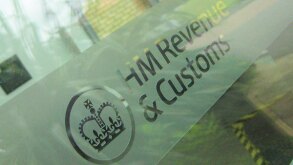Qianhai Cooperation Zone
The Qianhai Shenzhen-Hong Kong Modern Service Industry Cooperation Zone (Qianhai Cooperation Zone) is a 15 square kilometre area located in western Shenzhen, on the east coast of the Pearl River Delta adjacent to Hong Kong and Macau. Plans for Qianhai's development envision four modern service industries: finance, modern logistics, information services and science and technology services, along with other professional services sectors.
The key milestones of the development of Qianhai Cooperation Zone are:
Qianhai development policies
The circular, Guohan No 58, grants pilot development policies to Qianhai Cooperation Zone that are more preferential than those applied to Shenzhen Special Economic Zone in the financial, legal services, human resources, education, medical and telecommunications sectors. The key preferential pilot policies available at Qianhai Cooperation Zone are shown on Table 2.
Table 1 |
|
August 26 2010 |
The State Council approved “The Overall Development Plan for the Qianhai Shenzhen-Hong Kong Modern Service Industry Cooperation Zone”. |
June 27 2012 |
The State Council approved the preferential policies to facilitate the development of Qianhai Cooperation Zone (Guohan 2012 No 58). |
March 6 2013 |
The National Development and Reform Commission issued the Permitted Industry Catalogue for Qianhai Cooperation Zone (Fagaichanye 2013 No 468). |
Table 2 |
|
Development area |
Policies |
Financial sector |
|
Legal services |
|
Human resources |
|
Education and medical sector |
|
Telecommunications sector |
|
Financial and taxation policies of Qianhai
Guohan No 58 emphasises that under the prevailing national tax reform framework, Qianhai will play a pilot role in the exploration of tax reform in the modern service industry. Key preferential tax incentives will include:
A reduced CIT rate of 15% for qualified companies newly incorporated in Qianhai. Qualified companies must fall within the scope of the Permitted Industry Catalogue and Preferential Catalogue for Qianhai. The Permitted Industry Catalogue was issued in March 2013 and will be discussed in the following section, while the Preferential Catalogue is yet to be released.
The excess of China individual income tax (IIT) over the personal income tax on employment income in an individual's home jurisdiction will be subsidised for highly skilled individuals or those whose skills are in shortage in Qianhai. The subsidies will be exempt from China IIT. The detailed criteria and implementation rules remain to be clarified. One possibility is that the excess IIT will be subsidised by the Shenzhen municipal government in a levy first, refund later fashion.
Exemption of business tax (BT) for revenue derived from international transportation insurance services provided to companies registered in Qianhai by insurers registered in Shenzhen.
Other tax incentives include:
BT on a net basis will be available to qualified modern logistics enterprises registered in Qianhai, as with the prevailing national preferential policy for pilot logistics enterprises. However due to the value added tax (VAT) reforms pilot scheme in China, logistics enterprises have been subject to VAT instead of BT from August 1 2013 and the BT net basis incentive becomes irrelevant.
Revenues derived from offshore outsourcing services by enterprises registered in Qianhai will be exempt from BT.
Qualified advanced technology enterprises will enjoy a reduced CIT rate of 15% and its employee education expenses will be deductible up to 8% of total salaries in calculating the taxable income for CIT purposes.
Permitted Industry Catalogue
On March 6 2013, the National Development and Reform Commission (NDRC) issued the Permitted Industry Catalogue for Qianhai Cooperation Zone.
The six industrial sectors listed in the Permitted Industry Catalogue are an extension of the four key focus areas which were previously announced – financial services, modern logistics, information services and other professional services – in the State Council's consent on the Overall Development Plan for Qianhai Cooperation Zone in 2010.
The release of the Permitted Industry Catalogue is a clear message from the Chinese Central Government about its commitment to encouraging further development and opening up in Qianhai. It provides important guidance regarding the direction of investment, the administration of investment projects and the implementation of preferential policies in relation to tax and finance.
The Permitted Industry Catalogue and the Preferential Catalogue are two crucial elements contained in the announcement of the preferential policies for Qianhai Cooperation Zone (Guohan [2012] No 58) and form part of the preferential policies for Qianhai. The promulgation of the Permitted Industry Catalogue also indicates that the Preferential Catalogue will probably be finalised soon.
The Permitted Industry Catalogue covers six industry sectors: financial services, modern logistics, information services, technology services, professional services as well as public services. It covers a total of 112 industrial segments:
The financial services sector contains 23 segments including banking, financial institutions, non-banking financial institutions, securities, insurance, funds, production exchange markets, financial leases, financing guarantees, offshore financial services and other innovative financial services.
The modern logistics sector contains 18 segments including supply chain management, shipping transactions, freight brokerage and consultation services, logistics distribution and express delivery services for e-commerce, aircraft and repair parts transaction services, bonded logistics services (for example, bonded exhibitions and bonded transactions) and other e-commerce related commercial services.
The information services sector covers 16 segments including basic telecommunications services, value added telecommunications services, electronic authentication services, e-commerce, digital content services, development and application of internet digital content, technology and the application of high trustworthy computing, intelligent networks, the internet and mobile internet.
The technology services sector includes seven segments covering domestic and overseas research institutions and their branches, international institutions of technological innovation, scientific research services, technological consultation services, transformation and application services of scientific and technological achievements, quality certification, testing and inspection services, information technology outsourcing, business process outsourcing and knowledge process outsourcing.
The professional services sector contains 39 specific services under nine segments: accounting, valuation, legal services, consultation services, engineering services, cultural and creative services, exhibition, educational and medical services and intellectual property services.
The public services sector includes urban public support facilities, technological development and application of environmental protection, resource recycling and energy-saving, leisure services including yachts and aviation, social work services, high-end property management and leasing services.
Other preferential and supportive policies for Qianhai
Since November 2012, the government and regulatory authorities have continually issued regulations to support foreign-invested equity investment enterprises and IIT preferential policies for overseas talent and professionals in short supply in Qianhai. These policies aim to encourage and support modern financial services providers and talent to settle in Qianhai.
Looking ahead for Qianhai Cooperation Zone
It is reported that Qianhai Cooperation Zone will be developed in units, with 22 development units being planned initially. Although the construction and developments of the entire zone may take several years to complete, enterprises which are interested in investing should pay close attention to its progress and approach the Qianhai Administrative Bureau as early as possible.
As we have learned from the Qianhai Administrative Bureau, which is the statutory department performing administrative activities and public services in Qianhai, the approval and registration of enterprises in Qianhai has already commenced, although certain implementation rules for Qianhai is still in process. Many companies have already been registered in Qianhai and are operating on a trial basis.
Preferential policies in Qianhai are aimed at attracting new and incremental investments to the area, rather than mere relocation of existing enterprises, especially companies incorporated in other districts of Shenzhen. For example, the relocation of a logistics company from Luohu District, Shenzhen, to Qianhai may not qualify for CIT incentives. But if the company retains its operation in Luohu District and subsequently establishes another qualified project in Qianhai, it may enjoy CIT incentives for the Qianhai part.
The release and implementation of the Permitted Industry Catalogue provides a positive message that the launch of the Qianhai pilot programme will be accelerated. It also indicates that the regulatory authorities of the central government will continue to speed up the process of policy approval and release.
Circular, Guohan [2013] No 58, under the national tax reform states that the government encourages and supports Qianhai to explore and gain more experience with tax system reforms for the modern services industry. It states that qualified enterprises are eligible to enjoy a reduced CIT rate of 15% if they meet the requirements contained in the Permitted Industry Catalogue and Preferential Catalogue. The Preferential Catalogue, which is yet to be released, will provide a better understanding of when enterprises are eligible to enjoy a reduced CIT rate.
In addition, the details as to how the 15% CIT will be collected from the qualified enterprises is another uncertainty that needs to be addressed by the government.
When establishing an enterprise in Qianhai, foreign investors must also comply with the restrictions set out in the Foreign Investment Industries Catalogue. Examples of such sectors include basic telecommunication services and value added telecommunication services as listed in the permitted industry section in the Foreign Investment Industries Catalogue.
For high-end property management services under the public services sector, clarification will also be required as to whether there are requirements or restrictions on the location of the property and whether the property assets must be located within the Qianhai area or if the applicable scope can be extended outside Qianhai. The definition of high-end property and other related issues is also yet to be clarified.
Although some of the implementation details and specific requirements are not yet entirely clear, there are indications that the government and authorities are working towards issuing specific regulations and clarification of the policy details soon.
Shanghai Pilot Free Trade Zone
The Shanghai PFTZ consists of four areas that are under the special supervision of the Chinese Customs authority:
The Waigaoqiao Free Trade Zone;
The Waigaoqiao Bonded Logistics Park;
The Yangshan Bonded Port; and
The Shanghai Pudong Airport Comprehensive Bonded Zone.
The development of the Shanghai FTZ has proceeded at a breathtaking pace, as can be seen from this timeline:
Table 3 |
|
July 3 2013 |
The State Council passed Overall Plan for the Shanghai PFTZ. |
August 22 2013 |
The State Council approved the establishment of the Shanghai PFTZ. |
August 30 2013 |
The Standing Committee of the National People’s Congress released resolution in relation to the Shanghai PFTZ. |
September 27 2013 |
The State Council released the Circular on Overall Plan for the Shanghai PFTZ. |
September 29 2013 |
Shanghai PFTZ was officially launched. |
The framework as set out in the Overall Plan for the Shanghai PFTZ is:
Main goals and measures
1. Accelerating transformation of government functions
To reform the current government management system and build up an administrative management mechanism in line with the international standards on investments and trades.
To shift from current prior approval mechanisms to post-event supervision mechanisms, and build up efficient government service operations.
To increase and improve government administration transparency and information disclosure mechanisms to meet international standards.
2. Opening up new investment opportunities
To further expand certain industries for investments including financial services, shipping services, commercial trading services, professional services, cultural services and other social services.
To suspend or eliminate restrictions on investments in certain areas in terms of the qualification requirements, equity holding limits, business scope constraints and other access restrictions.
To relax certain restrictions on foreign investors, for example, to ensure they are granted a level playing field, to formulate the "negative list" investment administration model, that is, only those investment areas specified on the list are prohibited and the others are automatically taken to be permitted, and to replace the advance approval system with a "referential filing" system for projects falling outside the scope of the negative list. The negative list has been released setting certain projects that will require prior approval in 18 categories, for example, investment in methane gas projects and car manufacturing projects.
To adopt a referential filing management system for setting up subsidiaries abroad in order to facilitate outbound investments; in addition, to encourage the establishment of special purpose vehicles (SPVs) specialising in overseas equity investments and to encourage the setting up of parent funds to conduct equity investments overseas.
3. Accelerating trade reform
To encourage multinational companies to set up their Asia-Pacific headquarters and operation centres; to further develop international trading settlement centres; to support companies in the zone to promote their offshore business.
To explore a platform for large-sum international commodities trading and resource management for international merchandise trade and extend and improve the pilot programme on bonded futures delivery and to expand functions such as financing collateralised on warehoused goods.
To promote various outsourcing services; to encourage various finance leasing companies to set up SPVs to conduct onshore and offshore leasing business; to encourage establishment of third-party inspection and certification institutions; to pilot cross-border high value added and high-tech maintenance service and to promote cross-border e-business services.
To upgrade the international shipping services and leverage off the interaction among the Waigaoqiao port, the Yangshan port, and the international hub of Pudong airport; to develop shipping finance, international shipping, international vessel management and brokerage.
4. Opening up financial services sector through innovation
To promote RMB capital account convertibility, financial market interest rate liberalisation, cross-border use of RMB as long as the associated risks are well-managed; to allow financial asset pricing to be determined by financial institutions within the zone.
To reform foreign debt administration to facilitate investment, trade and cross-border financing, and to encourage multinational companies to set up regional or international fund management centres.
To open up financial services to private and foreign capital; to encourage the establishment of foreign-funded banks or Sino-foreign joint venture banks; to allow foreign enterprises to gradually participate in commodity futures transactions; to support equity custodians to set up a platform for comprehensive financial services; to support RMB cross-border reinsurance business.
5. Improving current legal framework
To align the regulations in the PRC Law on Wholly Foreign-owned Enterprises, the PRC Law on Sino-foreign Equity Joint Ventures and the PRC Law on Sino-foreign Cooperative Enterprises regarding the prior approval procedures to support the development of the Shanghai PFTZ.
To set up management policies that matches the pilot requirements for the pilot zone by Shanghai municipal legislation.
Supervision and tax policies
To simplify entry and exit itemised records and the declaration formalities for international transits of goods; to strengthen the electronic information network, and to set up the inspection and quarantine supervision mode to facilitate entry and exit of goods.
To introduce favourable tax measures to promote investments and trades, especially settlement of tax by instalment for gains derived from asset revaluation and income derived by individuals from stock-based incentive schemes; to grant export tax rebates for financial leasing companies; to grant reduced import VAT to domestic leasing companies or their SPVs that purchase aircraft with unladen weight of 25 tonnes or above from offshore and in turn lease such aircraft to domestic airlines; to optimise tax policies that facilitate overseas equity investments and offshore business developments.
Key investment areas of PFTZ
See Table 4 below.
Table 4 |
||
Financial services |
||
1 |
Banking |
|
2 |
Healthcare insurance |
|
3 |
Finance lease |
|
Shipping services |
||
1 |
Shipping |
|
2 |
International ship management |
|
Trade services |
||
1 |
Value added telecommunications |
|
2 |
Entertainment and game machines |
|
Professional services |
||
1 |
Law firms |
|
2 |
Credit investigation |
|
3 |
Travel agency |
|
4 |
Human resources agency |
|
5 |
Investment management company |
|
6 |
Engineering design |
|
7 |
Construction service |
|
Culture services |
||
1 |
Performing agencies |
|
2 |
Entertainment venues |
|
Public sector services |
||
1 |
Educational, training and professional skills training |
|
2 |
Medical services |
|
Note: The above standards only apply to the companies registered in the Shanghai PFTZ. |
||
The future of the Shanghai PFTZ
With the public announcement of the Overall Plan of the Shanghai PFTZ by the State Council of the PRC and the official launch, the overall direction and goals of the Shanghai PFTZ have now been established. The detailed regulations and guidelines following the Overall Plan will be issued progressively especially with respect to the practical implementation issues going forward.
Based on the Overall Plan of the Shanghai PFTZ, we note:
Financial sector-related reform is one of the key highlights in the Overall Plan. It is expected that further reforms will take place to promote the convertibility of the RMB, the cross-border use of the RMB and interest rate liberalisation. Once the implementation details are released, we foresee that financial institutions will develop innovative financial services and products to allow China to be even more competitive on an international basis; foreign and private capital can explore the opportunities in market entry of financial services; enterprises need to review and restructure their treasury management policies accordingly.
Detailed implementation rules concerning the relaxation of the restrictions in the six major services industries are gradually being released. We have seen some rules being released already which aim to ease the set up process and capital requirements and allow greater investment opportunities for investors.
Although tax reforms do not appear to be the key drivers under the current Overall Plan, we expect that the government may potentially develop preferential policies towards promoted industries through local subsidies to increase their competitiveness at home and abroad.
Breakthrough reforms are required in terms of foreign exchange control under the proposed trade remodelling and financial reform. We expect that foreign exchange policies applied in the Shanghai PFTZ will be released in due course.
To simplify the customs supervisions effectively, inspection and quarantine measures play a critical role in promoting cross-border and cross-zone trade. It will be interesting to see how this could be achieved once the related regulations are released.
New incentives
It is likely that the Qianhai Cooperation Zone and the Shanghai PFTZ will not be the only zones in China that offer investment advantages and tax incentives to both domestic and foreign investors. Local governments will continue to explore various official channels including investment policies to attract investments into their respective regions and cities. The Central Government will have to do its utmost to balance the interests and aspirations of all the areas. To foreign investors, these developments can bring plenty of opportunities through ease of investment and operations and the reduction of tax burdens. However, they can also present challenges relating to choice of location and investment and operational structure and dealing with uncertainties that will inevitably arise during the transitional periods. Overall, however, the impact of these developments on the foreign investors should be positive.
Henry Ngai of KPMG China also contributed to this article.
Biography |
||

|
|
Karmen YeungTax Partner KPMG China 8th Floor, Prince's Building 10 Chater Road Central, Hong Kong Tel: +852 2143 8753 Fax: +852 2845 2588 Email: karmen.yeung@kpmg.com Karmen Yeung has extensive experience providing PRC corporate and individual tax advisory advice to foreign investment enterprises in the PRC. She has advised multinational corporations on their investment structures in China and on establishing tax efficient supply chain models, particularly relating to sourcing, manufacturing, distribution and retailing in China from the corporate income tax, transfer pricing, value added tax and customs duty perspectives. |
Biography |
||

|
|
Chris MakTax Partner KPMG China 50th Floor, Plaza 66 1266 Nanjing West Road Shanghai 200040, China Tel: +86 21 2212 3409 Fax: +86 21 6288 1889 Email: christopher.mak@kpmg.com Chris Mak has experience in advising multinational clients in the consumer, industrial and manufacturing industries in relation to appropriate corporate holding and funding structures to conduct their proposed business activities in Australia. Since joining the Shanghai office, he has been heavily involved in assisting foreign companies on PRC tax issues arising from their investment into China including proposed global restructuring, company set-ups, due diligence, foreign exchange remittance issues and M&A transactions for the industrial, auto and real estate industries. |









